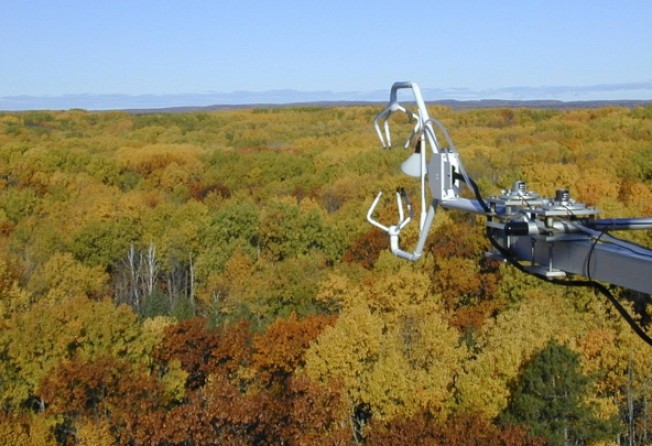
Forests may be adapting to climate change, US research shows
Researchers found that broad-leaved trees are becoming increasingly efficient in their water use, making them more resilient to drought

The fate of the world's forests on a warming planet has long been one of the great unanswered questions about climate change. Now, new research is complicating the picture further, suggesting that big shifts are already under way in how forests work.

Some scientists say they believe that this might be a direct response to the rising level of carbon dioxide in the air from human emissions, although that has not yet been proved.
If the research holds up, it suggests some potential benefits for forests. They might be able to make do with less water, for instance, becoming more resilient in the face of drought and higher temperatures as climate change proceeds.
But the new finding also had potential downsides, scientists said. The immense volume of water that trees pull out of the ground winds up in the atmosphere, helping supply moisture to farming areas downwind of forests. So if trees use less water, that could ultimately mean less rain for thirsty crops in at least some regions of the world.
Several scientists predicted that the new research would set off a flurry of efforts to clarify whether trees are really using less and what the implications might be, not only for forests but for the human and ecological systems that depend on existing patterns of moisture flow.
The work was led by Trevor Keenan of Macquarie University in Sydney and published online by the journal Nature. Keenan did most of the work as a research associate at Harvard.
The study is based on technology that, for about two decades, has allowed scientists to make careful measurements of the water vapour and other gases flowing in and out of forests. Large-scale patterns are starting to emerge.
Examining 21 of these records for forests scattered across northern latitudes, Keenan's group found that broad-leaved trees, in particular, are becoming more efficient in their water use. For a given amount, they are essentially able to take more carbon dioxide out of the atmosphere than they could a decade ago.
"We've examined the trend upside down and inside out as much as we can, and it is wholly robust," Keenan said.
We've examined the trend upside down and inside out as much as we can, and it is wholly robust
He and his collaborators were able to rule out several possible explanations, leaving one likely candidate: the rising level of carbon dioxide in the air. That increase apparently means plants are able to partly close their leaf pores and still get enough of the gas. And closing pores reduces the evaporation of water from the leaf, meaning the tree needs to suck less of it out of the ground.
Keenan emphasises that more work needs to be done to prove that that is the correct explanation. If it is, his data suggest the effect is several times larger than the assumptions incorporated into computer forecasts of how forests and other landscapes will respond to climate change.
Those forecasts might need to be revised, with unknown but potentially large implications.
"We are definitely far from getting to the bottom of it at the minute," Keenan said.
Earlier research suggests that climate change is having a mixed effect on forests, depending on their location.
In some places, large diebacks are under way. Millions of acres of forest have been lost in the American West because earlier snowmelt is reducing water supplies and winter temperatures are no longer cold enough to control beetle outbreaks.